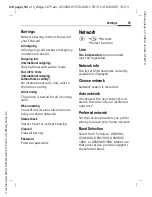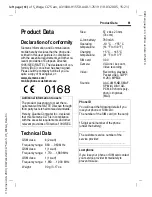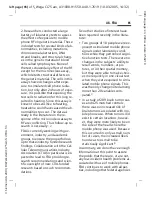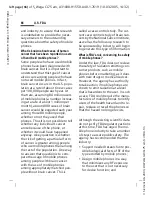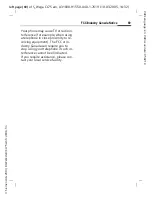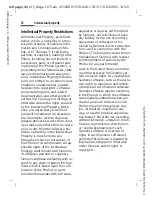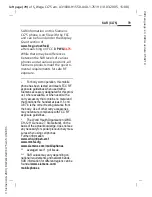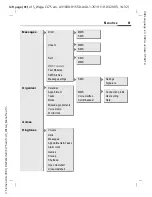
©
Si
eme
ns A
G
20
03
, D
:\W
er
ks
ta
tt
\C
L75
a
m
fc
c\
FD
A
.f
m
67
U.S. FDA
VA
R Lan
gua
ge: e
n; VA
R is
su
e dat
e: 05
02
10
left page (67)
of S_Wega CL75 am, A31008-H1550-A40-1-7619 (10.03.2005, 14:32)
• Cooperate in providing mobile
phone users with the best possible
information on what is known
about possible effects of mobile
phone use on human health.
• At the same time, FDA belongs to
an interagency working group of
the federal agencies that have re-
sponsibility for different aspects
of mobile phone safety to ensure
a coordinated effort at the federal
level. These agencies are:
• National Institute for Occupation-
al Safety and Health
• Environmental Protection Agency
• Federal Communications
Commission
• Occupational Health and Safety
Administration
• National Telecommunications and
Information Administration
The National Institutes of Health also
participates in this group.
In the absence of conclusive information
about any possible risk, what can con-
cerned individuals do?
If there is a risk from these products
– and at this point we do not know
that there is – it is probably very
small. But if people are concerned
about avoiding even potential risks,
there are simple steps they can take
to do so. For example, time is a key
factor in how much exposure a per-
son receives. Those persons who
spend long periods of time on their
hand-held mobile phones could con-
sider holding lengthy conversations
on conventional phones and reserv-
ing the hand-held models for shorter
conversations or for situations when
other types of phones are not
available.
People who must conduct extended
conversations in their cars every day
could switch to a type of mobile
phone that places more distance be-
tween their bodies and the source of
the RF, since the exposure level
drops off dramatically with distance.
For example, they could switch to:
• a mobile phone in which the an-
tenna is located outside the
vehicle,
• a hand-held phone with a built-in
antenna connected to a different
antenna mounted on the outside
of the car or built into a separate
package, or
• a headset with a remote antenna
to a mobile phone carried at the
waist.
Where can I find additional information?
For additional information, see the
following websites:
• Federal Communications Com-
mission (FCC) RF Safety Program
(select “Information on Human Ex-
posure to RF Fields from Cellular
and PCS Radio Transmitters”):
www.fcc.gov/oet/rfsafety

